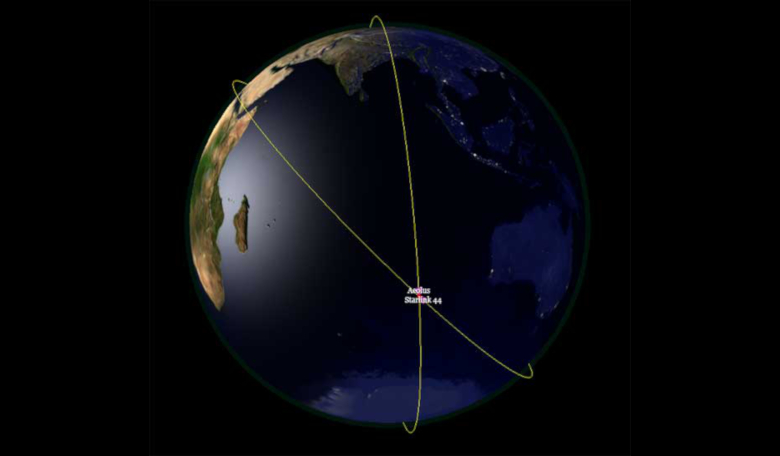With the skies getting ever more crowded, it was bound to happen sooner or later but this week marked the first time that two satellites came perilously close to one another, prompting a ‘collision avoidance manoeuvre’ to be issued by ESA - the owner of one of the spacecrafts.
Last week, ESA got news that a satellite from SpaceX’s Starlink constellation was starting to edge its way towards the agency’s Aeolus Earth observation satellite.
The ‘news’ or rather data comes from a constant stream of information provided by the 18th Space Control Squadron of the US Air Force, who monitor objects orbiting in Earth’s skies so that organisations such as ESA can calculate the probability of collision between their spacecraft and all other artificial objects in orbit.
As the number of satellites in space dramatically increases, it is expected that close approaches between two operated spacecraft will occur more frequently and data issued last week warned of such an event.
The perpetrator was Starlink44 – one of the first 60 satellites recently launched by SpaceX as part of its 12 000 strong mega constellation. The rest SpaceX hopes to have in place by mid-2020.
The potential ‘conjunction’ was expected to occur at 11:02 UTC on Monday, 2 September. As days passed, the probability of collision continued to increase, and by Wednesday 28 August the team decided to reach out to the owners of Starlink to discuss what could be done.
It might seem an outdated method given how humanity has put a man on the Moon, but when operators try to avoid the collision between two satellites, they simply email one another to sort it out.
“This example shows that in the absence of traffic rules and communication protocols, collision avoidance depends entirely on the pragmatism of the operators involved,” explains Holger Krag, Head of Space Safety at ESA. “Today, this negotiation is done through exchanging emails – an archaic process that is no longer viable as increasing numbers of satellites in space mean more space traffic.”
Although ESA’s threshold for conducting an avoidance manoeuvre, which is put into action when a collision probability of more than 1 in 10 000 is reached, tipped over this limit for the first time on Thursday evening, the Starlink team advised the agency that they had no plan to take any action at this point.
As the probability of a collision continued to increase in the next few days, the final decision to implement the manoeuvre was made on Sunday, and the commands were sent to the spacecraft from ESA’s mission control centre in Germany.
On Monday morning, to avert a potential head-on collision, Aeolus triggered a series of thruster burns to position itself away from the Starlink satellite. About half an hour later Aeolus contacted home, thus letting its operators know that the manoeuvre had been correctly executed. Since then, it has been business as usual for this Earth observation satellite.
SpaceX have since said that a software bug led to the near miss of the two satellites and the company has issued the following statement regarding the conjunction; “Our Starlink team last exchanged an email with the Aeolus operations team on August 28, when the probability of collision was only in the 2.2e-5 range (or 1 in 50k), well below the 1e-4 (or 1 in 10k) industry standard threshold and 75 times lower than the final estimate. At that point, both SpaceX and ESA determined a manoeuvre was not necessary.
Then, the U.S. Air Force’s updates showed the probability increased to 1.69e-3 (or more than 1 in 10k) but a bug in our on-call paging system prevented the Starlink operator from seeing the follow on correspondence on this probability increase — SpaceX is still investigating the issue and will implement corrective action. However, had the Starlink operator seen the correspondence, we would have coordinated with ESA to determine best approach with their continuing with their manoeuvre or our performing a manoeuvre.”
Collision avoidance manoeuvres take a lot of time to prepare and early contact between the two operators was key in preventing an in-orbit skirmish between Aeolus and Starlink 44.
“No one was at fault here,” says Krag, “but this example does show the urgent need for proper space traffic management, with clear communication protocols and more automation. This is how air traffic control has worked for many decades, and now space operators need to get together to define automated manoeuvre coordination.”











